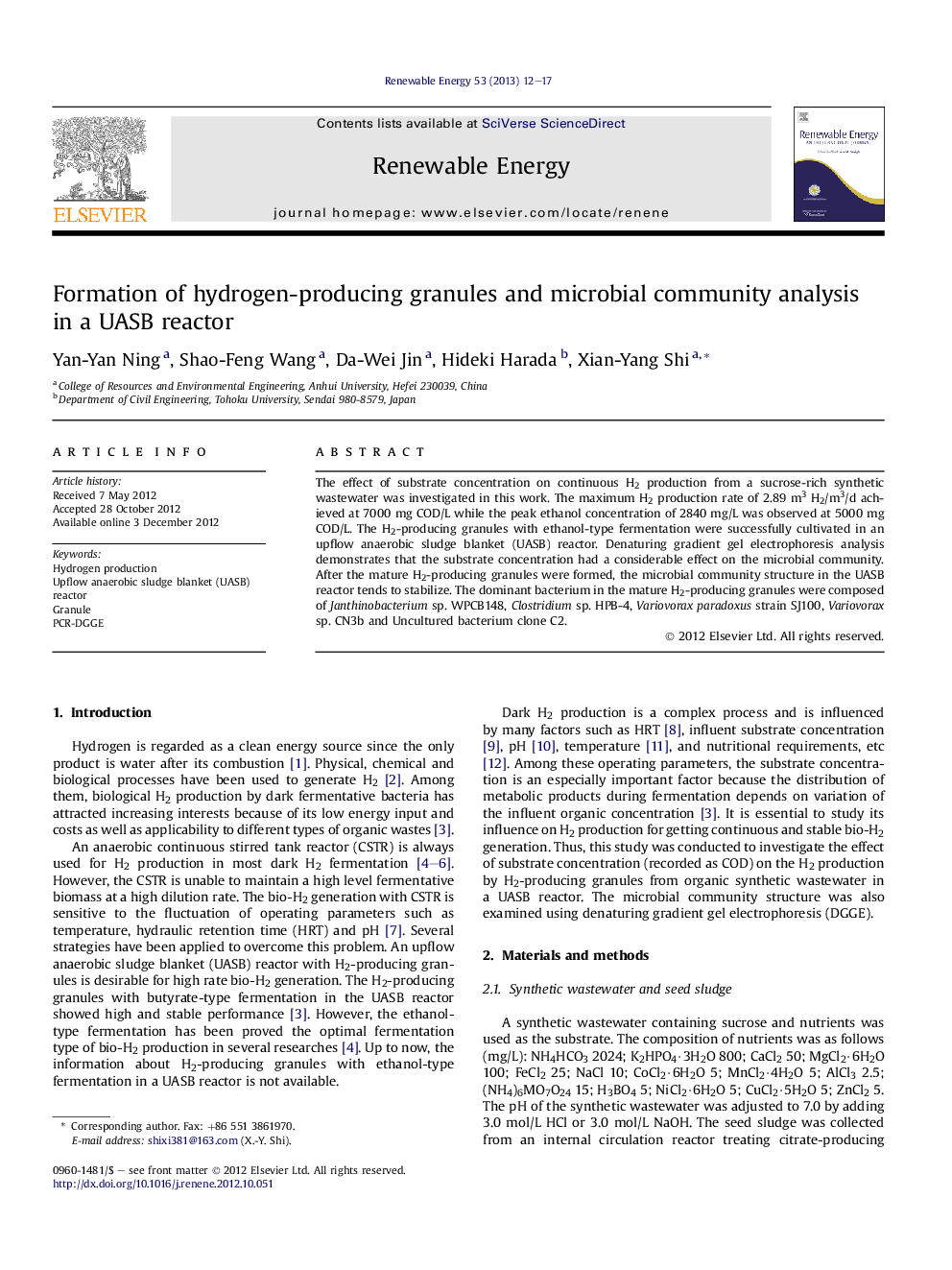| Article ID | Journal | Published Year | Pages | File Type |
|---|---|---|---|---|
| 300483 | Renewable Energy | 2013 | 6 Pages |
The effect of substrate concentration on continuous H2 production from a sucrose-rich synthetic wastewater was investigated in this work. The maximum H2 production rate of 2.89 m3 H2/m3/d achieved at 7000 mg COD/L while the peak ethanol concentration of 2840 mg/L was observed at 5000 mg COD/L. The H2-producing granules with ethanol-type fermentation were successfully cultivated in an upflow anaerobic sludge blanket (UASB) reactor. Denaturing gradient gel electrophoresis analysis demonstrates that the substrate concentration had a considerable effect on the microbial community. After the mature H2-producing granules were formed, the microbial community structure in the UASB reactor tends to stabilize. The dominant bacterium in the mature H2-producing granules were composed of Janthinobacterium sp. WPCB148, Clostridium sp. HPB-4, Variovorax paradoxus strain SJ100, Variovorax sp. CN3b and Uncultured bacterium clone C2.
► The H2-producing granules with the ethanol-type fermentation were cultivated in a UASB reactor. ► We investigated the effect of substrate concentration on continuous H2 production. ► A good H2-production performance was observed at late-operation phase with the formation of anaerobic granules. ► The substrate concentration had a considerable effect on the microbial community structure based on DGGE analysis.
